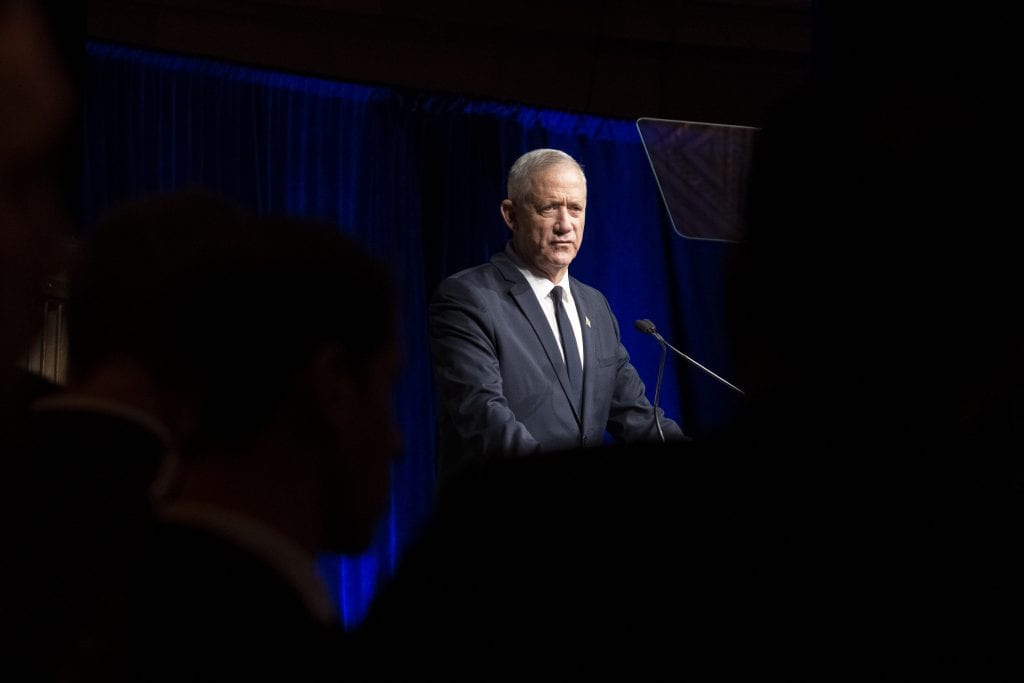
At a Jerusalem Post conference in New York on Monday, Israel’s Defense Minister, Benny Gantz, revealed a map displaying Syrian arms manufacturing facilities used to produce advanced weapons for Tehran and its proxies in the region.
Gantz attributed the development of the precision guided munitions (PGM) sites to former Islamic Revolutionary Guards Corps-Quds Force (IRGC-QF) commander Qassem Soleimani and said the facilities were being used to distribute advanced arms to Lebanese Hezbollah including other militant organizations backed by Tehran.
“Under the vision of Qassem Soleimani, Iran transformed CERS (Syrian Scientific Studies and Research Center) into production facilities for mid and long-range, precise missiles and weapons, provided to Hezbollah and Iranian proxies. In other words, it became yet another Iranian front – a factory for advanced, strategic weapons,” Gantz stated.
Furthermore, Gantz called attention to the “underground” CERS site in Masyaf, saying it was being used to “produce advanced missiles.”
By specifically mentioning the arms manufacturing facility in Masyaf, Gantz may have been hinting that Israel was behind the Aug. 25 attack on the site.
While Israel did not officially admit responsibility for the strikes, Reuters, citing Russian news agencies, reported Israel was behind the assault saying “four Israeli jets had launched a total of four cruise missiles and 16 guided aerial bombs” at the CERS site in Masyaf.
Gantz also warned similar arms manufacturing facilities were being constructed in Lebanon and Yemen.
The Israel Defense Forces (IDF) have long warned about the production of PGMs in Lebanon. On Sept. 29 2021, the IDF published a detailed report revealing three “underground” PGM sites located in Beirut. The report claimed Hezbollah was manufacturing PGMs at the locations in order to “directly target Israeli civilians, towns and cities.”
On Aug. 18, IDF military chief Aviv Kohavi stated ten days earlier a “third country” had been attacked during the Gaza conflict. While Kohavi did not name the third country, evidence suggests the IDF carried out a military operation in Yemen.
On Aug. 8, reports claimed a blast had occurred at a “military camp” near the capital of Sanaa, Yemen. The cause of the blast was blamed on a “malfunction” during the transfer of ballistic missiles.
Several weeks later, Houthi spokesperson Yahya Saree tweeted a message warning Israel against “committing any foolishness, because doing so will not be met with silence but with an appropriate response.”
While the Houthi’s regularly condemn Israel, Saree’s message appeared to directly address the possibility that Israel carried out the offensive. In addition to the tweet, an editorial published by the Houthis denied the attack took place. Although, given Israel’s history of carrying out military operations abroad against Iranian weapons sites, it is plausible that the IDF was behind the blast near Sanaa on Aug. 8.







